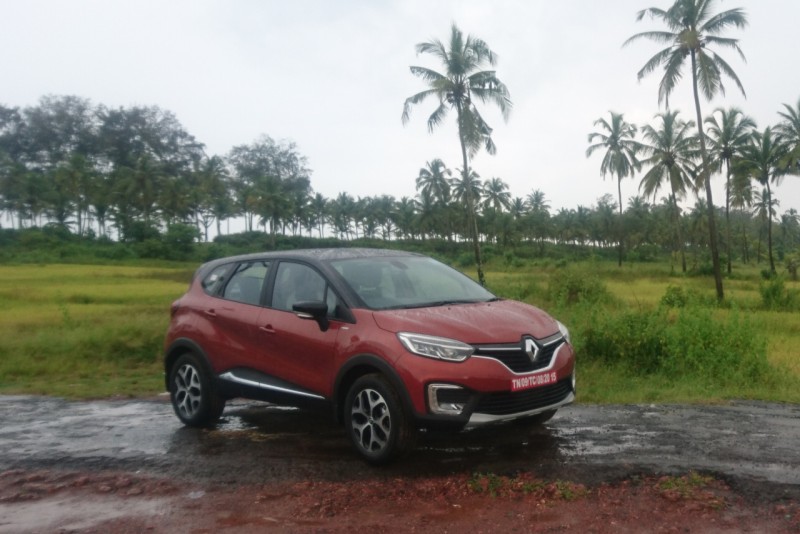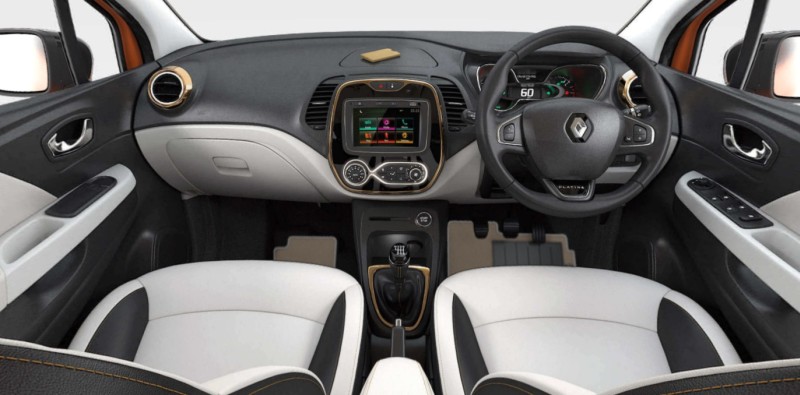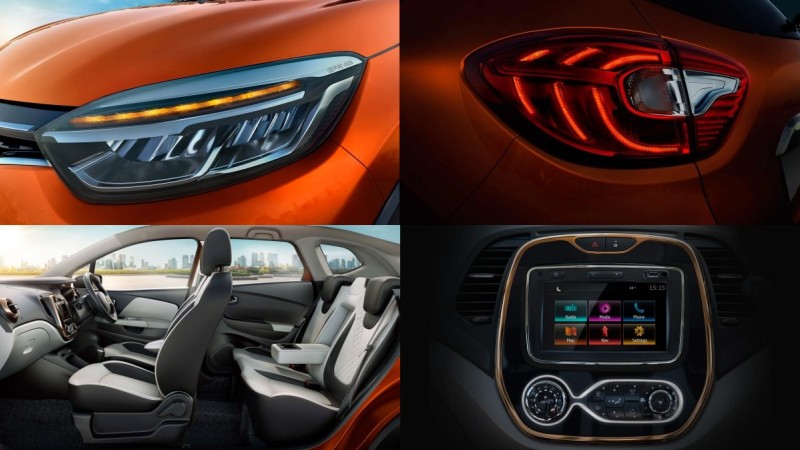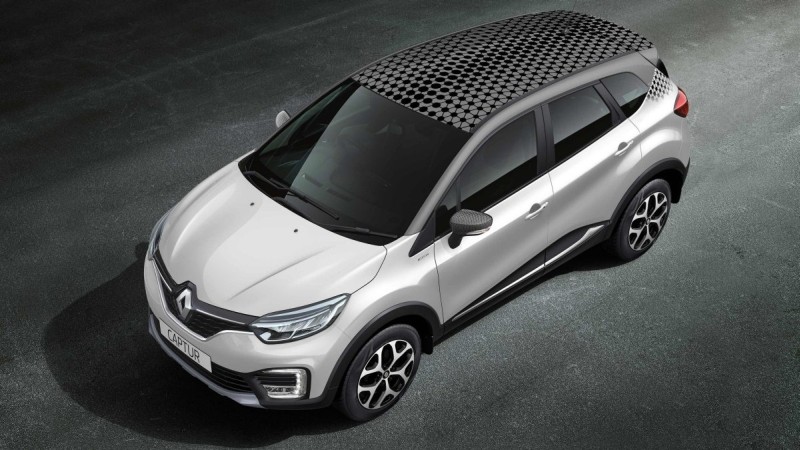Renault have brought in the made-for-India version of the Captur and it impresses us. Just how good is it really? We drive it across Goa to find out.
Story: Jim Gorde
Renowned French carmaker Renault have given us one more contemporary example of how to bring beauty and depth of flavour to the road. This is the Captur. The flagship.
The Captur been available overseas for some time now, wowing urban SUV seekers with its style and flowing design language. And, now, here it is in India, longer, at 4,329 mm, and higher, with a 210-mm ground clearance. The same proven turbo-diesel engine that fares so well in so many models overseas powers it here. The Captur takes the values of the Duster and raises them further. There has been some serious attention to detail, but is it enough to make it a success?
Exterior styling for the Captur is something Renault have to be proud of. The new face of the French major comes here for the first time with the bold grille sharply tapering towards its extremities. The LED headlamps, with ‘floating’ turn indicators take a page from the exotic and super-luxury book. The accentuating lines continue on the air dam, and host LED daytime lights. The side profile has pronounced lines and sweeps upwards sharply. Together with the ‘crystal-cut’ 17-inch alloy wheels, they give this car a bolder profile not often seen. The rear is tight, but looks vaguely familiar, albeit much larger. LED tail-lamp clusters complete the look.
Inside, the most outstanding feature is the pair of seats at the front. A lot of research and effort has gone into making them not just feel good, but look good, too. Renault could have slimmed the seat-backs and lightened them as well as freed up room, but they haven’t. The brilliant ergonomics and comfort come from the fact that they’ve retained the large units. The support is fantastic, and is in just the right places, too. The attention to detail on the seats, with the faux leather and the contrast stitching, makes you feel like this is indeed a special car you’re in. Again, this is a bag of mixed emotions because while the seats are brilliant, there are ways comfort could be improved. They’re mounted far too high, and only the driver’s seat is adjustable. Both front seats lack power adjustments ― did someone say premium? Lowering the seats and giving some powered switches would surely make things much better.
On the plus side again, the dashboard layout and design look artistic and the tone of the white and gold soft metal accents look and feel rather fancy. The centre touchscreen MediaNAV system makes connectivity and navigation easier. Again, the mixed bag steps in to say the quality of plastic could be improved. The door handles and switches are from the regular parts bin. And there’s no sunroof. Okay, to be fair, Renault haven’t announced a price yet, but they’re saying it will be extremely appealing, let along competitive.
More goodies are on offer. First, the flat key. The Captur is equipped with keyless entry and go, and even a neat little slot for the key. The start button sits neatly on the centre console, not obstructed from view. There are several storage spaces around the cabin and each one can store objects of varying shapes and sizes. The boot is large and wide, with additional under-floor storage available. ABS is standard, as are four airbags: dual front and side bags.
So what of its ability? The Renault Captur is based on the platform from Dacia; who created the Duster. In all fairness, it’s brilliant. The suspension is nothing short of engineering wizardry ― as always! ― and it deals with all surfaces and changes in direction pretty much flawlessly. However, that also means it gets the 1.5-litre turbo-diesel K9K motor in dCi110 guise, and its surge of torque.
We were in Goa driving across and that meant a good mix of narrow roads, steep inclines, sudden direction changes, even grass and sand on the beach. The Captur sounds reasonably refined, yet the early morning hours meant the diesel clatter was audible through the sound deadening. Paired to a six-speed manual driving the front wheels, the engine’s lack of response below 1,750 rpm meant frequent shifts to first to tackle the many speed-humps. The gate is small and the throws are short, thankfully. Post 2,000 rpm, though, there’s a strong wave of torque. Yes, it may be 245 Nm but even that can seem amplified by the lack of low-end grunt. The driveability on the move is good. The mid-range builds well and overtaking is easier given the engine’s character. It will rev strong to over 4,000. There’s scope, rather, a necessity, for an automatic transmission option as well.
The steering feel is excellent, the new info-console behind it is easy to read, with its mix of digital and analogue. The steering wheel is height-adjustable. The right spoke successfully makes the phone-control stalk invisible, but once you figure it out, you know where everything is. The gauges are also informative and a real-time fuel economy read out actually tells your how much fuel you’ve used, apart from the fuel economy; 11 km/l was what we saw in the city. You’ll have to wait for the road test to find out exactly how much it deliver.
No price to give you, but we expect to see something around Rs 15 lakh. Renault will also offer a lot of personalisation choices. Everything from a dual-tone roof and roof-rails to a choice of graphics as well as themes will be available. It’s a great all-rounder and can deal with a fair bit of the rough stuff and tricky terrain. It’s a classic French balance of convenience, comfort, safety and practicality with exuberant design and modern touches.
Need To Know – Renault Captur dCi Platine Edition M/T
Price: Rs 15 lakh (estimated)
Engine: 1,461 cc, in-line four, turbo-diesel
Max Power: 110 PS at 4,000 rpm
Max Torque: 245 Nm at 1,750 rpm
Transmission: Six-speed, manual, front-wheel drive
Weight: 1,500 kg (est)


























Leave a Reply